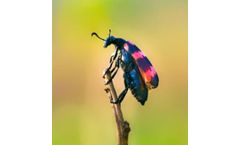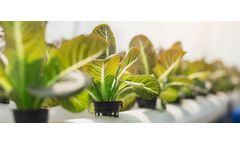Refine by
Breeding Program Articles & Analysis
46 articles found
” Several factors play into successful?dog reproduction?and dog breeding programs, including knowledge about basic reproduction, reproductive health for dogs, whelping and post-natal care.? At BioZyme®, our team adores dogs of all breeds, colors and sizes. We realize that nutrition is our specialty, but nutrition and reproductive ...
Research into hormone signaling pathways helps in breeding programs aimed at creating stress-tolerant crops. Biotechnological Applications: Hormone analysis is fundamental in plant biotechnology, facilitating genetic manipulation and tissue culture practices. ...
This remarkable diversity highlights the need for precise genome size determination, which has broad implications for taxonomy, evolutionary biology, breeding, and ecological studies. This article delves into the methods used to measure plant genome sizes, their significance, and the potential applications of such data. ...
Why there's a necessity for it? What some approaches to doing that might be? Segra is a Canadian-based Cannabis tissue culture nursery business. We grow plants at industrial scale for LPs. We can also do preservation and regeneration services by tissue culture for people and I oversee a genetics lab which performs various tests from everything from pathogen detection to what I’m going to ...
Cytokinin is also used in plant breeding programs for the development of new varieties with desirable characteristics such as early maturity, high yield, and resistance to biotic and abiotic stresses. ...
Cytokinin is also used in plant breeding programs for the development of new varieties with desirable characteristics such as early maturity, high yield, and resistance to biotic and abiotic stresses. ...
- Reproduction Strategy: Pheromones can be used to modify animal behavior in breeding programs and to improve the success rate of breeding. Application of Pheromone Activity screening service The use of pheromone activity screening service can enhance various industries, such as agriculture, medical research, and perfume production. ...
The future of agriculture is ever-changing… And in the bid to feed the world by 2050 there are a number of key challenges, but also exciting opportunities. With an ever-rising global population, climate change, food security and working out how to produce enough nutrient-dense food for the masses are high priorities for the agriculture sector. These colossal world issues present many ...
The approach included use of genomic selection, the concept of using genome-wide dense genetic maps to predict the genetic merit of individual animals, and enhance selective breeding efficiency. Troutlodge and the USDA worked together to increase selection accuracy for BCWD, and apply the technology to commercially available broodstock. ...
Even today’s popular press abounds with examples of genetics research, including some of our society’s most intriguing controversies such as the cloning of animals and the production of “genetically-engineered” foods. Genetic improvement programs in agriculture One of the most significant developments central to the success of modern agriculture has ...
It all started with a lot of note taking on paper and Excel docs, comparing notes, and finding ways to store and analyze the data so we could make sense of what we were seeing in the field with the different phenotypes in our breeding programs. As we got into it, we started to realize that genetics are really the foundation of what we do. Through ...
ByArable
The berry breeding program at the Agriculture and AgriFood Canada (AAFC) Kentville Research and Development Centre in Kentville, Nova Scotia, is now the Small Fruit Germplasm Development Program. ...
Continued research and implementation of honey bee breeding innovations to select for pest and disease resistance in honeybees. ...
A massive international rehabilitation program followed the disaster. Wetlands International was among a handful of foreign aid agencies to target ecological rehabilitation of coastal ecosystems. ...
Leaf rust resistance gene Lr42 from Aegilops tauschii Coss. has been used as a source of rust resistance in breeding programs. To identify molecular markers closely linked to Lr42, a segregating population of near-isogenic lines contrasting for the presence of Lr42 was developed in the hard winter wheat cultivar Century background and evaluated for rust infection ...
With the advancement of molecular marker technology and computer software, mapping quantitative trait loci (QTL) for complex traits in agricultural crops is frequent; however, exploitation of these QTL in practical breeding programs is limited. Here we report the validation of molecular markers linked to net blotch resistance QTL and their utilization in a barley ...
Understanding genetic parameters of populations that are being considered for inclusion into plant-breeding programs provides critical knowledge to enhance economic traits of interest. ...
Although Rht-D1a explained a major portion of genetic variation for long coleoptile in Wangshuibai, a combination of Rht-D1a in Wangshuibai with gibberellic acid (GA)–sensitive Rht genes for reduced wheat height from other sources should be able to select long coleoptiles, semidwarf cultivars in wheat breeding programs for which long coleoptile is a ...
Yield stability across environments is a critical breeding goal when dealing with unstable climate and input reductions in farming systems. ...
This study was conducted to identify new allelic variants at the Psy-A1 and Psy-B1 loci in durum wheat, and to evaluate the applicability of functional markers developed from common wheat (Triticum aestivum L.) for durum wheat breeding. Two new allelic variants, Psy-A1d and Psy-A1e, were identified at the Psy-A1 locus, and both the codominant markers YP7A and YP7A-2 can be used ...












